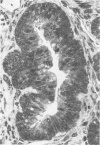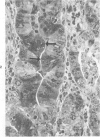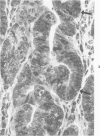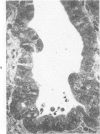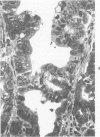Abstract
During the growth of 1,2-dimethylhydrazine (DMH)-induced colon neoplasms in mice from microscopic ones at 9 weeks to macroscopic, invasive ones at 25-26 weeks after the initiation of DMH treatments, the neoplastic glands became increasingly but variably elongated and tortuous, with epithelial evaginations and/or invaginations. For assessment of the mode of growth and genesis of heterogeneity of neoplasms, colon neoplasms induced by two different cumulative doses of DMH were compared at 25-26 weeks after the initial DMH injection. At this time they invaded the colonic wall similarly in depth. However, neoplasms that developed in mice given a higher cumulative dose of DMH had a more homogeneous cell population, a higher proliferative activity, and more apoptotic bodies than those with a lower dose. By 73 hours after multiple tritiated thymidine injections, most neoplastic cells became labeled. There were numerous foci of unlabeled cells seen among, or alternating with, areas of labeled cells. Epithelial evaginations into the glandular lumen consisted of proliferating cells and/or differentiated cells; whereas invaginations into the lamina propria contained only proliferating cells. These findings suggest a compartmentalization of neoplastic glands into multiple neoplastic clonogenic units during growth, from which cellular heterogeneity and architectural complexities of neoplastic glands develop.
Full text
PDF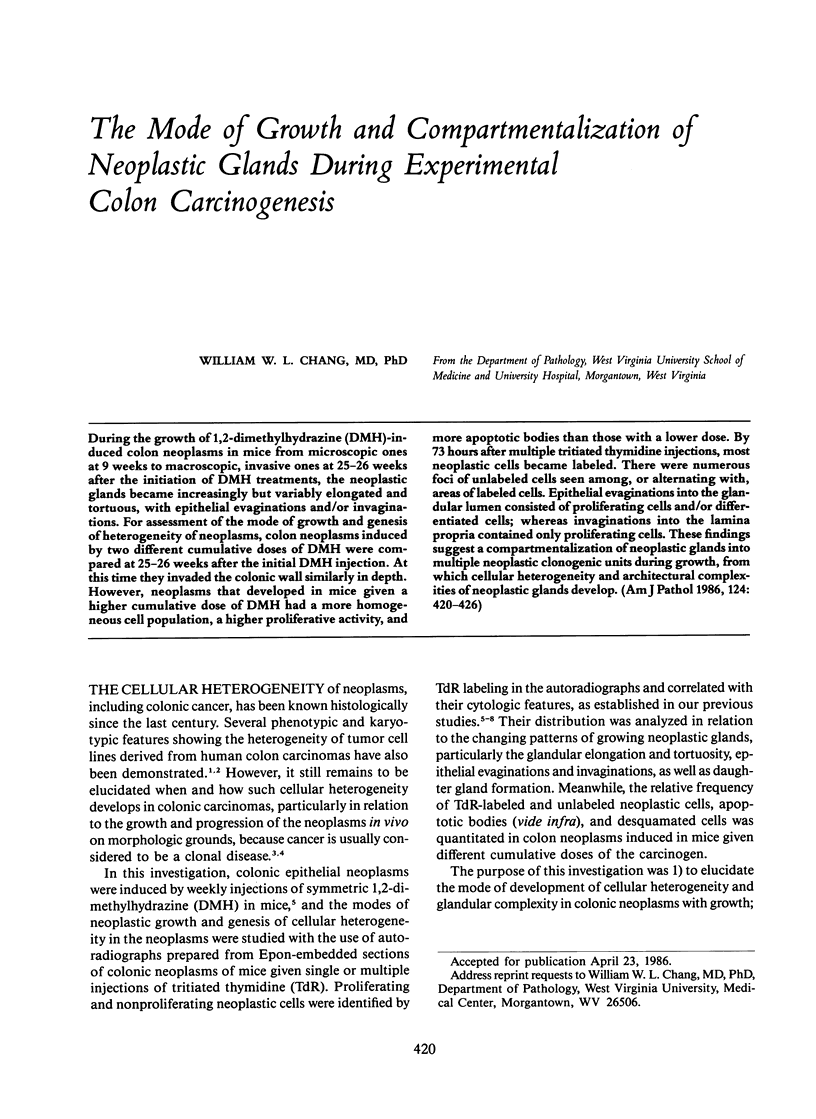
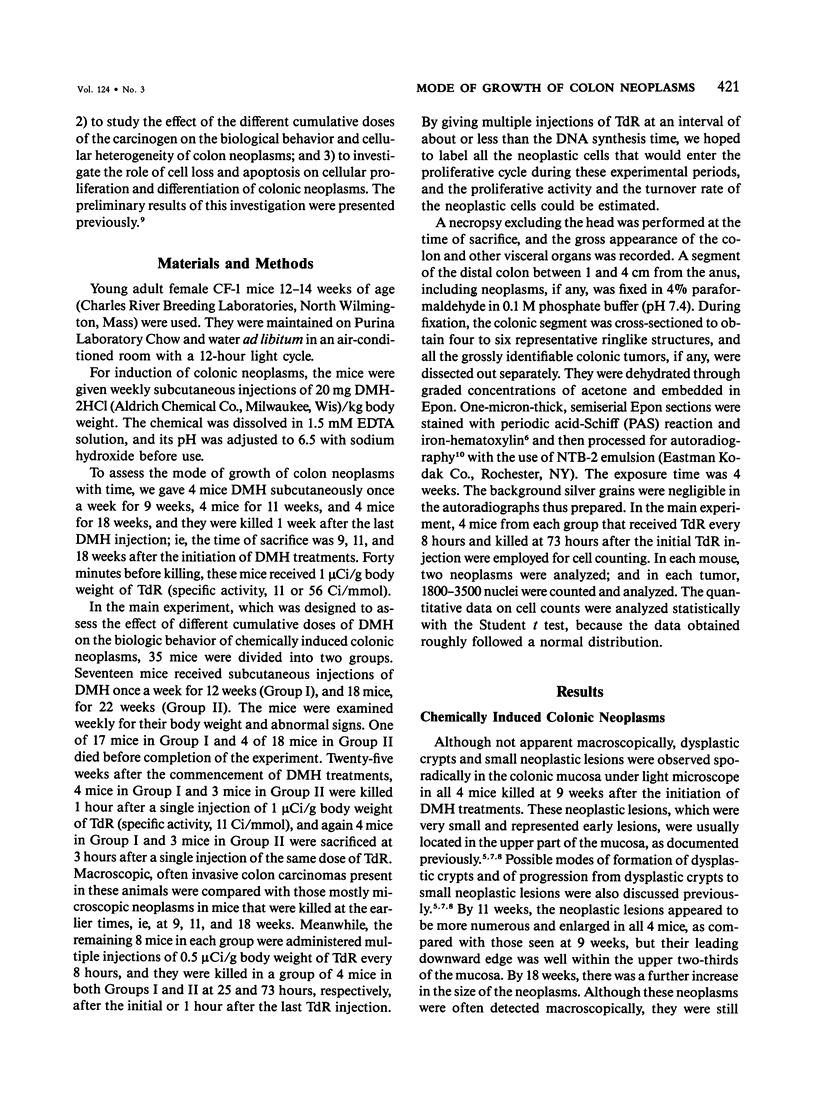
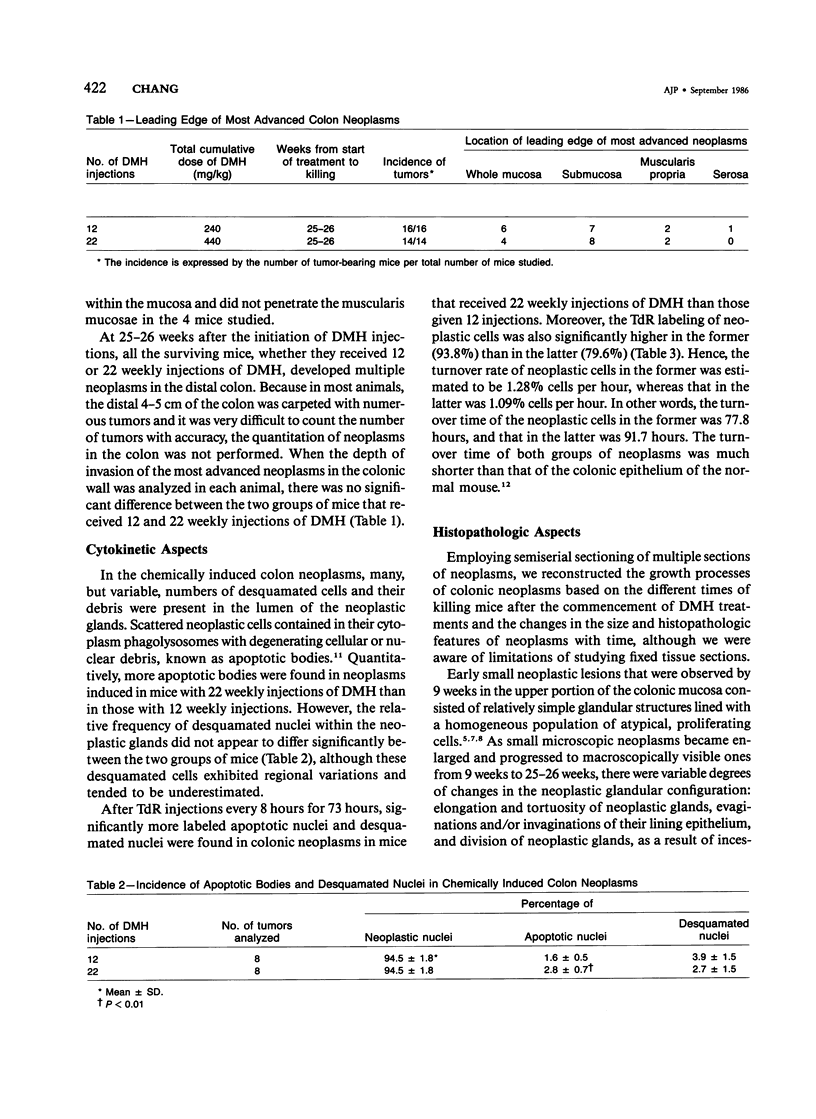
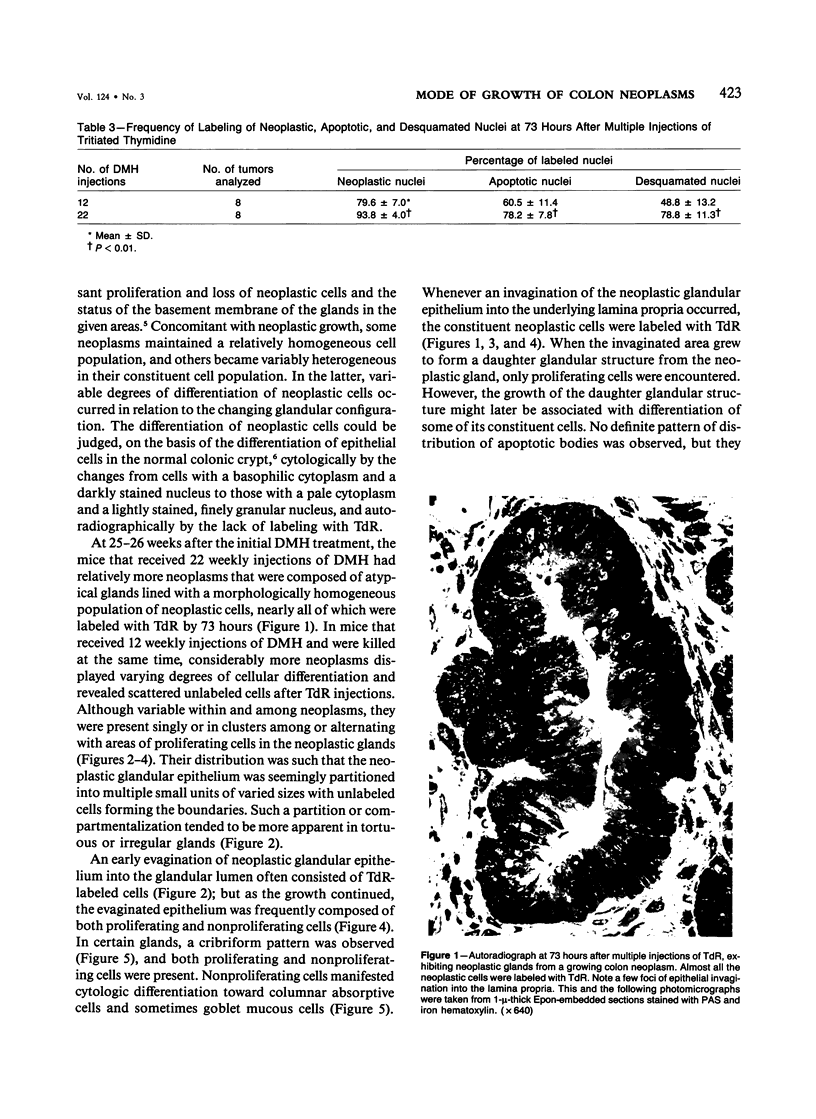
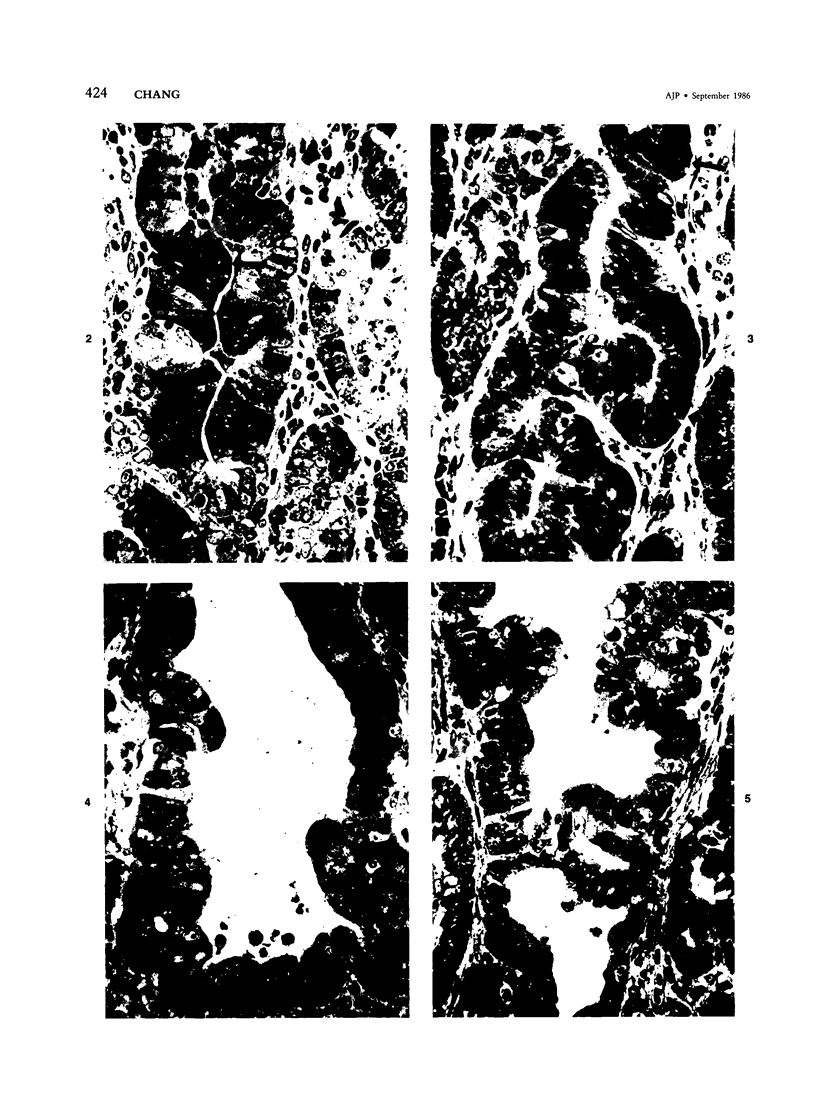
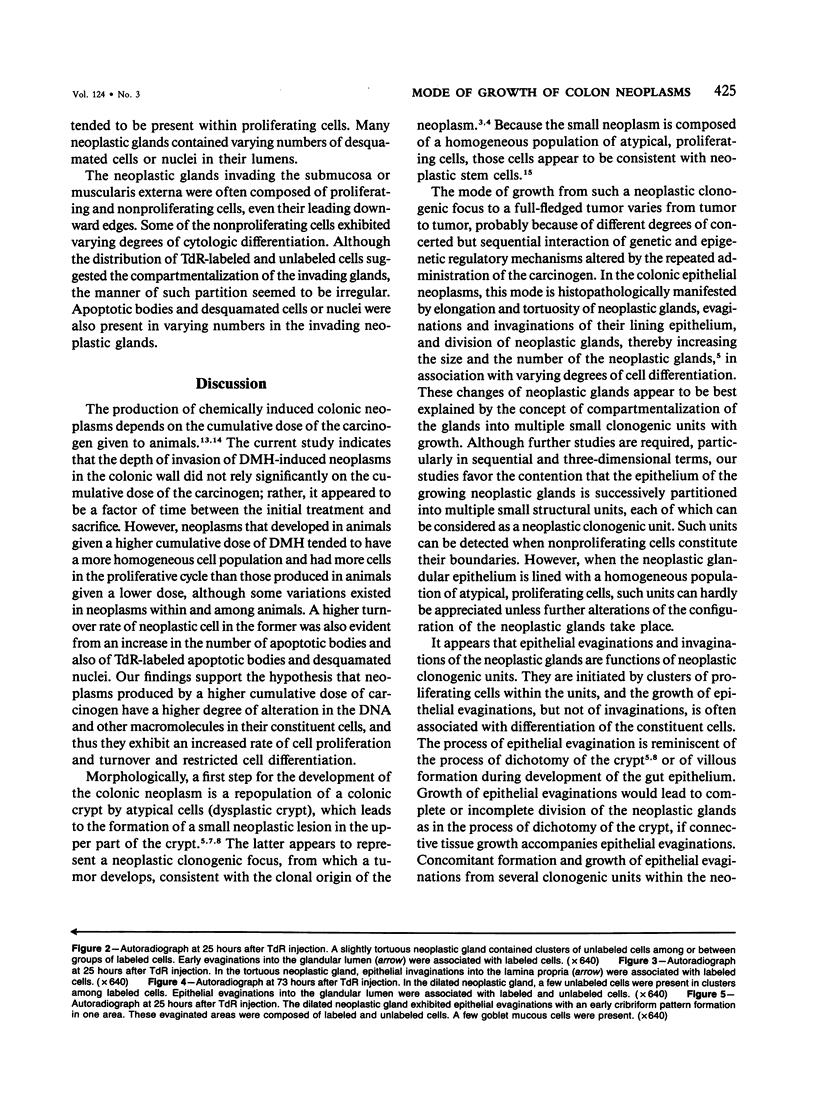
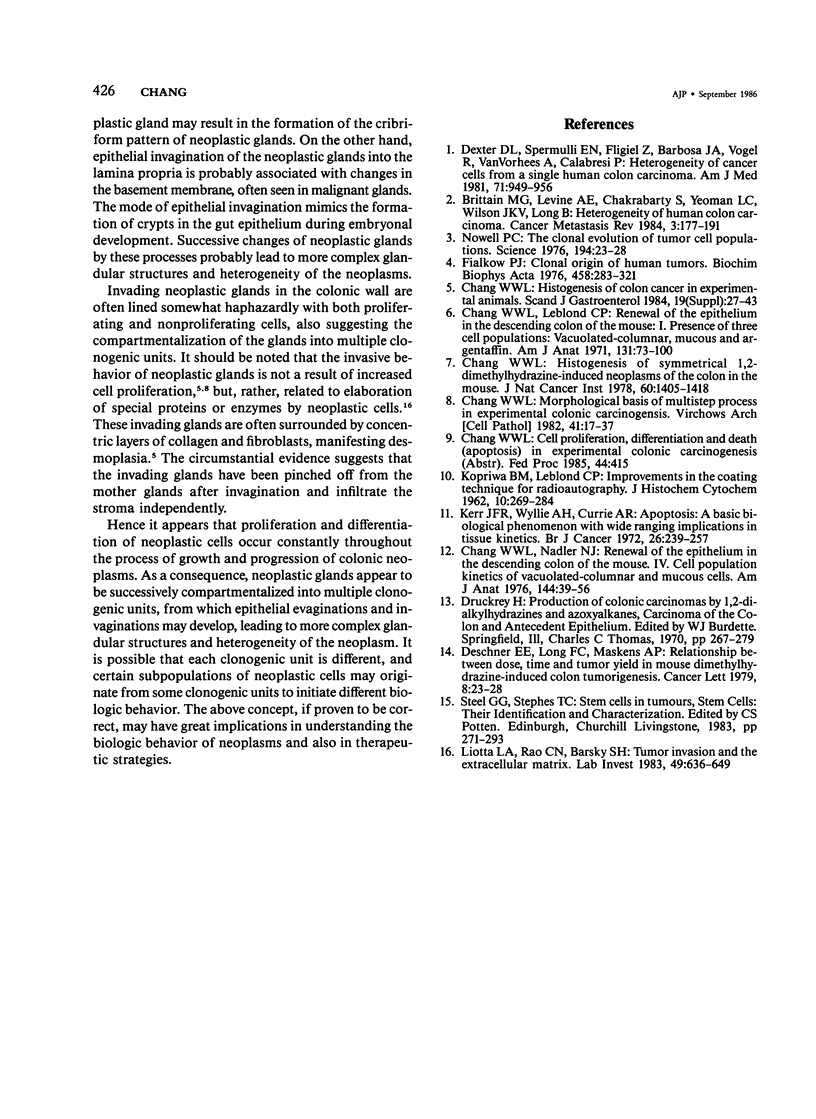
Images in this article
Selected References
These references are in PubMed. This may not be the complete list of references from this article.
- Brattain M. G., Levine A. E., Chakrabarty S., Yeoman L. C., Willson J. K., Long B. Heterogeneity of human colon carcinoma. Cancer Metastasis Rev. 1984;3(3):177–191. doi: 10.1007/BF00048384. [DOI] [PubMed] [Google Scholar]
- Chang W. W. Histogenesis of colon cancer in experimental animals. Scand J Gastroenterol Suppl. 1984;104:27–43. [PubMed] [Google Scholar]
- Chang W. W. Histogenesis of symmetrical 1,2-dimethylhydrazine-induced neoplasms of the colon in the mouse. J Natl Cancer Inst. 1978 Jun;60(6):1405–1418. doi: 10.1093/jnci/60.6.1405. [DOI] [PubMed] [Google Scholar]
- Chang W. W., Leblond C. P. Renewal of the epithelium in the descending colon of the mouse. I. Presence of three cell populations: vacuolated-columnar, mucous and argentaffin. Am J Anat. 1971 May;131(1):73–99. doi: 10.1002/aja.1001310105. [DOI] [PubMed] [Google Scholar]
- Chang W. W. Morphological basis of multistep process in experimental colonic carcinogenesis. Virchows Arch B Cell Pathol Incl Mol Pathol. 1982;41(1-2):17–37. doi: 10.1007/BF02890268. [DOI] [PubMed] [Google Scholar]
- Chang W. W., Nadler N. J. Renewal of the epithelium in the descending colon of the mouse. IV. Cell population kinetics of vacuolated-columnar and mucous cells. Am J Anat. 1975 Sep;144(1):39–56. doi: 10.1002/aja.1001440104. [DOI] [PubMed] [Google Scholar]
- Deschner E. E., Long F. C., Maskens A. P. Relationship between dose, time, and tumor yield in mouse dimethylhydrazine-induced colon tumorigenesis. Cancer Lett. 1979 Nov;8(1):23–28. doi: 10.1016/0304-3835(79)90018-1. [DOI] [PubMed] [Google Scholar]
- Dexter D. L., Spremulli E. N., Fligiel Z., Barbosa J. A., Vogel R., VanVoorhees A., Calabresi P. Heterogeneity of cancer cells from a single human colon carcinoma. Am J Med. 1981 Dec;71(6):949–956. doi: 10.1016/0002-9343(81)90312-0. [DOI] [PubMed] [Google Scholar]
- Fialkow P. J. Clonal origin of human tumors. Biochim Biophys Acta. 1976 Oct 12;458(3):283–321. doi: 10.1016/0304-419x(76)90003-2. [DOI] [PubMed] [Google Scholar]
- Kerr J. F., Wyllie A. H., Currie A. R. Apoptosis: a basic biological phenomenon with wide-ranging implications in tissue kinetics. Br J Cancer. 1972 Aug;26(4):239–257. doi: 10.1038/bjc.1972.33. [DOI] [PMC free article] [PubMed] [Google Scholar]
- Liotta L. A., Rao C. N., Barsky S. H. Tumor invasion and the extracellular matrix. Lab Invest. 1983 Dec;49(6):636–649. [PubMed] [Google Scholar]
- Nowell P. C. The clonal evolution of tumor cell populations. Science. 1976 Oct 1;194(4260):23–28. doi: 10.1126/science.959840. [DOI] [PubMed] [Google Scholar]



